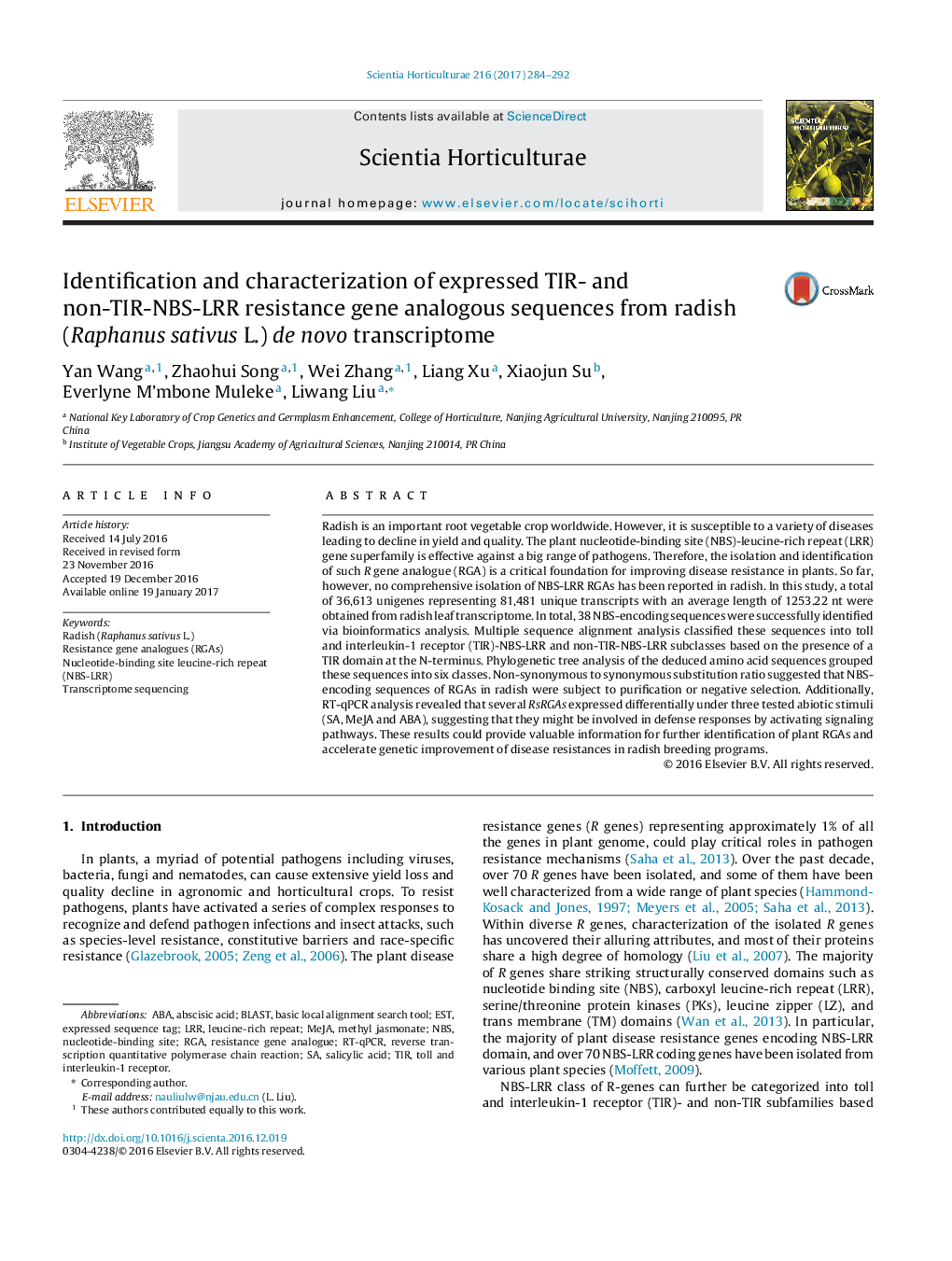| Article ID | Journal | Published Year | Pages | File Type |
|---|---|---|---|---|
| 5769781 | Scientia Horticulturae | 2017 | 9 Pages |
â¢The NBS-RGA sequences from de novo transcriptome were firstly identified and characterized in radish.â¢A total 38 of RsRGAs were classified into non-TIR- and TIR-NBS-LRR subfamilies basing on the conserved motifs and phylogenetic tree analysis.â¢All RsRGA genes were up-regulated under certain abiotic stresses including SA, ABA and MeJA treatment.
Radish is an important root vegetable crop worldwide. However, it is susceptible to a variety of diseases leading to decline in yield and quality. The plant nucleotide-binding site (NBS)-leucine-rich repeat (LRR) gene superfamily is effective against a big range of pathogens. Therefore, the isolation and identification of such R gene analogue (RGA) is a critical foundation for improving disease resistance in plants. So far, however, no comprehensive isolation of NBS-LRR RGAs has been reported in radish. In this study, a total of 36,613 unigenes representing 81,481 unique transcripts with an average length of 1253.22 nt were obtained from radish leaf transcriptome. In total, 38 NBS-encoding sequences were successfully identified via bioinformatics analysis. Multiple sequence alignment analysis classified these sequences into toll and interleukin-1 receptor (TIR)-NBS-LRR and non-TIR-NBS-LRR subclasses based on the presence of a TIR domain at the N-terminus. Phylogenetic tree analysis of the deduced amino acid sequences grouped these sequences into six classes. Non-synonymous to synonymous substitution ratio suggested that NBS-encoding sequences of RGAs in radish were subject to purification or negative selection. Additionally, RT-qPCR analysis revealed that several RsRGAs expressed differentially under three tested abiotic stimuli (SA, MeJA and ABA), suggesting that they might be involved in defense responses by activating signaling pathways. These results could provide valuable information for further identification of plant RGAs and accelerate genetic improvement of disease resistances in radish breeding programs.
